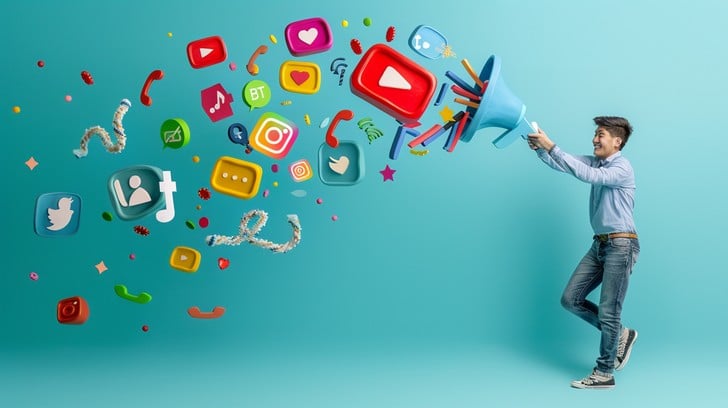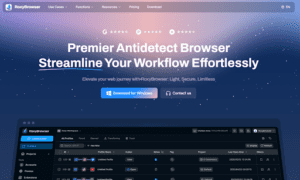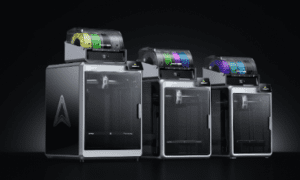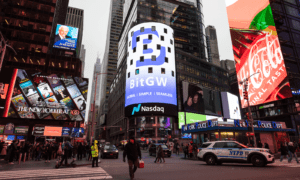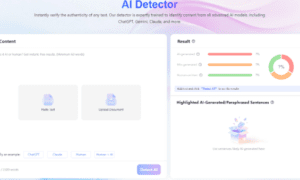In today’s fast-paced digital world, managing social media is no longer just about posting content. It’s about staying consistent, engaging audiences, and growing brand presence—all while keeping up with the ever-changing algorithms. That’s why leading businesses are turning to social media marketing automation to streamline their efforts and maintain a strong online presence without constant manual input. By putting key processes on autopilot, top brands are able to scale their strategies, save time, and focus more on creativity and big-picture planning.
In this post, we’ll uncover how top-performing companies use automation tools and strategies to manage their social media channels effectively. Whether you’re a solo entrepreneur or part of a growing marketing team, these insights can help you understand what it takes to operate your social channels like the pros.
The Rise of Social Media Automation
The growth of social media platforms has created both opportunity and pressure for brands. With users spread across Facebook, Instagram, X (formerly Twitter), LinkedIn, TikTok, and more, businesses are expected to show up everywhere—often daily. But manually posting, responding, and tracking analytics across multiple platforms can quickly become overwhelming.
This is where automation comes into play. Tools like Buffer, Hootsuite, Later, and Sprout Social allow brands to schedule posts in advance, manage engagement, and track performance all in one place. Automation helps brands maintain a consistent posting schedule, which is essential for building trust and visibility. It also eliminates the risk of forgetting key dates, such as product launches or seasonal campaigns.
Importantly, automation is not about removing the human element. It’s about supporting your team with tools that allow more room for strategic planning and quality content creation. Brands that automate smartly are able to stay active without burning out.
Scheduling Content Like a Pro
Top brands don’t just post randomly—they plan everything in advance. One of the most effective strategies they use is the content calendar. These calendars help teams map out posts weeks or even months ahead. By knowing what’s coming, brands can align content with campaigns, events, or trends.
Using scheduling tools, marketers can queue posts for optimal times based on audience engagement patterns. For example, data might show that Instagram users engage more during lunch hours while LinkedIn performs best in the early morning. By scheduling posts during these peak times, brands increase the chances of their content being seen and shared.
Also, many tools offer features like automatic reposting of evergreen content. This means popular blog posts, product highlights, or tutorials can be shared again over time, ensuring maximum reach with minimal effort.
Automating Engagement Without Losing Authenticity
Engagement is the backbone of social media success. However, manually responding to every comment, DM, or mention can be time-consuming, especially for larger brands with massive followings.
To handle this, top companies use AI-powered tools that provide automated responses or direct inquiries to the right team. For example, chatbots can reply to common questions, such as store hours or shipping details, within seconds. At the same time, any complex or sensitive issues are flagged for human attention.
Some platforms also allow for smart moderation, automatically hiding spammy or offensive comments. This keeps brand pages clean and professional without requiring a human to monitor them constantly.
Still, the best brands balance automation with authenticity. They make time to personally respond to key followers or influencers and participate in trending conversations. Automation handles the routine, but real people drive the connection.
Data-Driven Decisions Through Automated Analytics
One of the most powerful benefits of automation is the ability to gather and interpret data quickly. Social media analytics tools can automatically track metrics like reach, engagement, follower growth, click-through rates, and conversions.
Top brands use these insights to adjust their strategies in real time. For instance, if a particular type of post performs better on Instagram but falls flat on Twitter, they can shift content accordingly. Data also helps identify the best times to post, which hashtags generate traction, and which campaigns deliver the highest ROI.
Instead of spending hours compiling reports, teams can receive automated summaries sent directly to their inboxes. This means faster decision-making and more agile marketing.
Integrating Automation With Broader Marketing Strategies
For social media automation to be truly effective, it needs to work hand-in-hand with broader marketing efforts. Successful brands integrate their automation tools with CRM systems, email marketing platforms, and e-commerce tools.
For example, when someone makes a purchase or signs up for a newsletter, that data can be used to trigger social media messages or ads. Similarly, changes in customer behavior—like abandoning a shopping cart—can automatically initiate a retargeting campaign.
This level of integration ensures that messaging stays consistent across all platforms and that audiences receive timely, relevant communication. It also reduces duplication of work, allowing marketing teams to operate more efficiently.
Leveraging Influencer and User-Generated Content
Top brands know that social media is not just about their voice—it’s also about the voices of their customers. Many use automation to track and repurpose user-generated content (UGC) and influencer collaborations.
Tools can monitor mentions, hashtags, and tags to identify when customers post about the brand. Once identified, the best content can be curated and scheduled for reposting, often with automated approval flows in place.
Similarly, influencer campaigns can be managed more easily with automation. Platforms now exist that match brands with influencers, handle contracts, schedule posts, and track performance—all with minimal manual effort.
This approach not only builds trust but also saves time and expands reach in an authentic way.
Managing Crises and Real-Time Events Efficiently
Social media crises can escalate quickly, and top brands are always prepared. Automation plays a key role in this preparation by setting up alerts and workflows that kick in when something unusual happens.
For example, a sudden spike in negative comments or mentions can trigger notifications for the PR team. Pre-approved responses or holding statements can be automatically deployed while the situation is reviewed. Meanwhile, scheduled posts can be paused to avoid appearing insensitive or out of touch during a crisis.
This level of readiness ensures that brands maintain control over their image, even when the unexpected occurs.
Scaling With Teams and Permissions
As brands grow, so do their teams. Managing multiple users, roles, and approval processes manually can create bottlenecks. To solve this, automation tools come with features that allow for customized permissions and workflows.
A junior marketer might be able to create content, while a manager must approve it before it goes live. Notifications ensure that nothing is missed, and audit trails provide transparency for all actions taken.
This streamlines collaboration and maintains quality control, especially for global teams working across different time zones.
Staying Ahead With AI and Predictive Technology
The future of social media automation lies in AI and predictive tools. Leading brands are already using machine learning to identify trending topics, suggest hashtags, and even create content ideas based on past performance.
Some tools now offer automated caption writing, image recognition, and voice-to-text features. These advances reduce time spent on content creation and increase consistency across platforms.
Additionally, predictive analytics help forecast campaign outcomes, optimize ad spend, and plan better content calendars. Brands that leverage these technologies gain a competitive edge by staying ahead of the curve.
Final Thoughts
Top brands don’t succeed on social media by accident. They use well-thought-out strategies supported by powerful automation tools to streamline processes, maintain consistency, and boost engagement. From scheduling posts to analyzing data, responding to customers, and managing crises, automation allows them to stay ahead without burning out.
If you’re looking to elevate your social presence, adopting automation the smart way is no longer optional—it’s essential. Start small, choose the right tools, and focus on building a system that supports your goals while leaving room for real human connection. That’s how you truly put your social media on autopilot and still stay personal.

